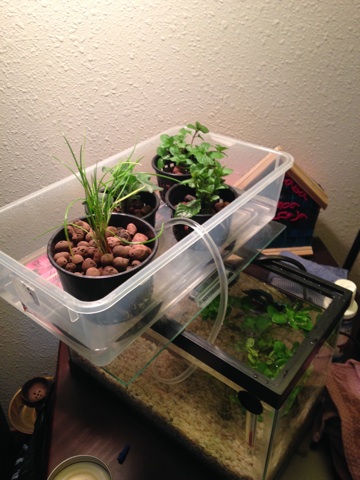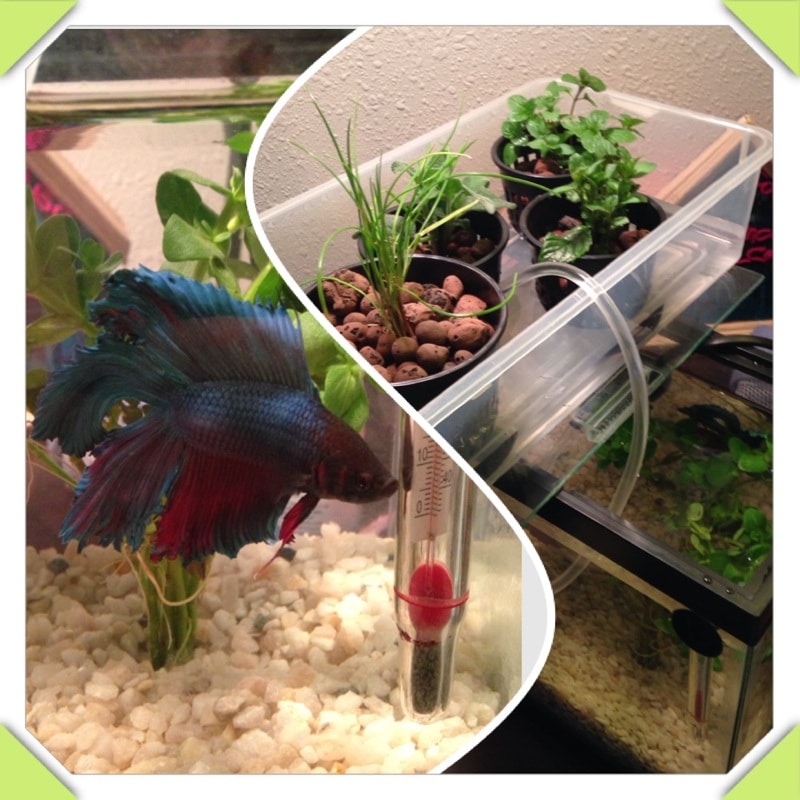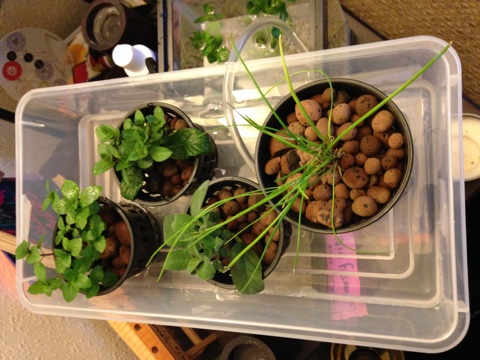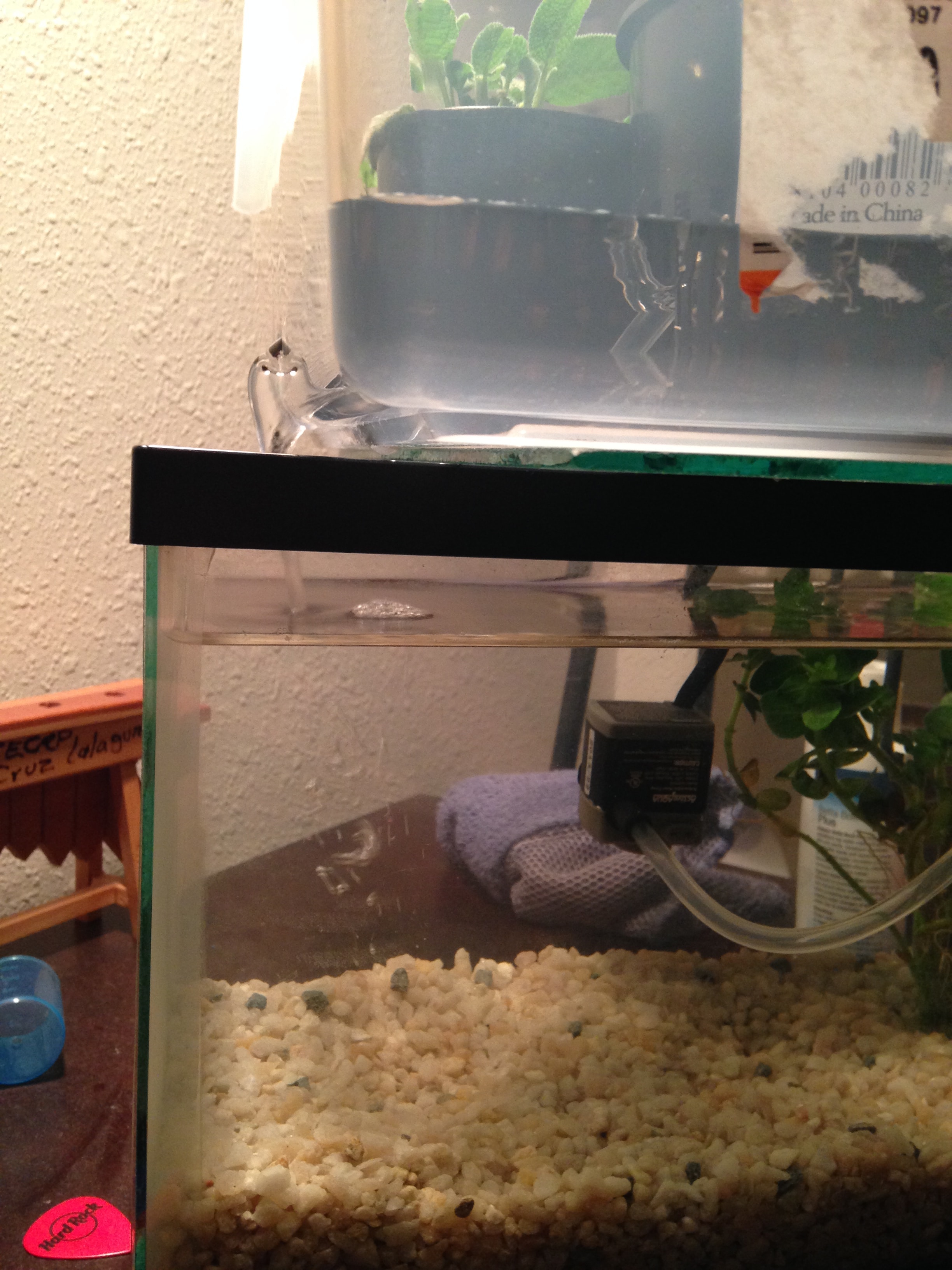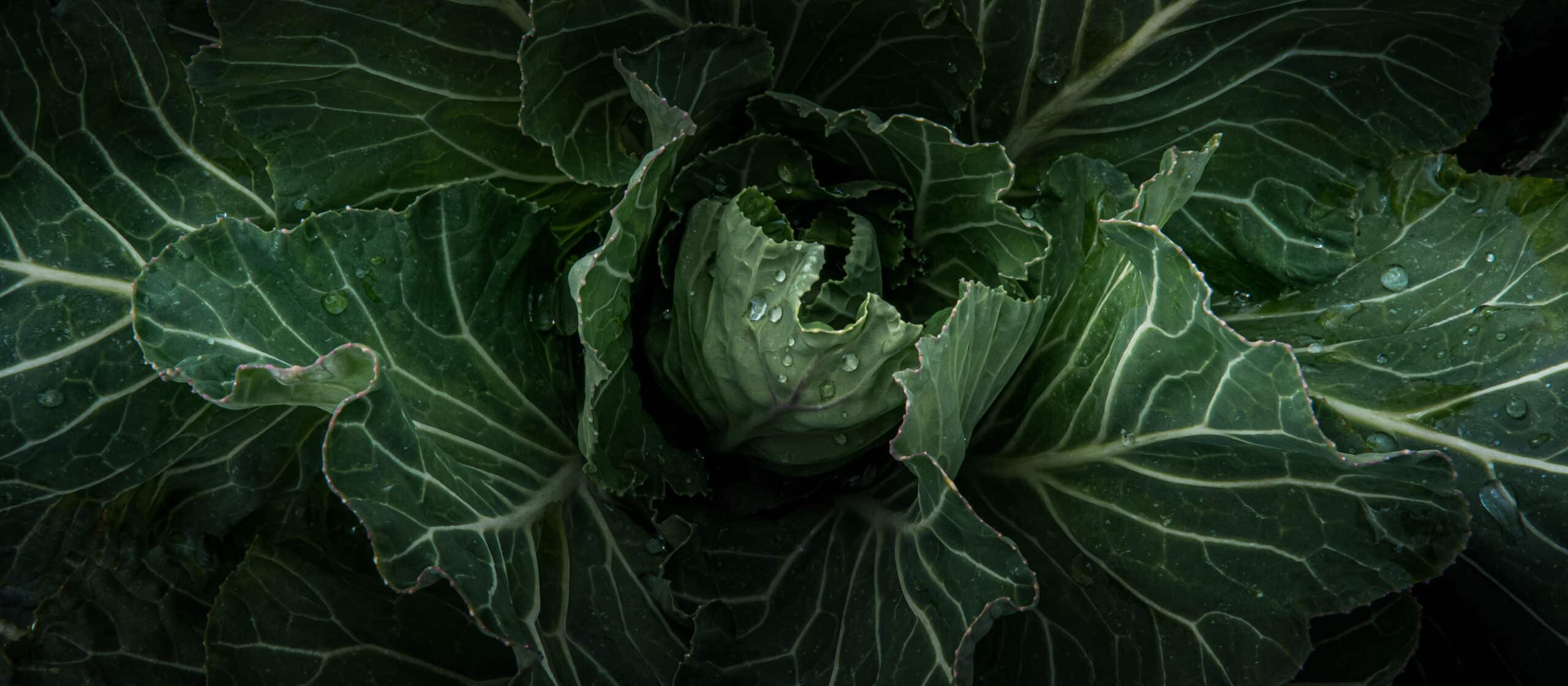
Pet Fish Owner to Aquaponic Gardener
Pet Fish Owner to Aquaponic Gardener
- posted on: March 22, 2014
- posted by: 21 Acres
"*" indicates required fields

I work at 21 Acres and I commute from where I live in a small apartment near the city. Like most people who live in an urban environment; I don’t have space to garden. I do, however, have a small deck where I can grow some herbs and vegetables. That was until the worst of the winter frost wiped out my healthy plants and any chance I had left at having one last harvest. The unpredictable Pacific Northwest weather put a sudden halt to my deck gardening and as I’m anxiously waiting for spring to arrive so I can plant again, I recently designed an indoor garden using my fish tank I set up over a year ago. I first bought my Betta fish because I had an empty aquarium I never used and I thought it would be relaxing to have a fish to take care of. I soon discovered I didn’t like having a fish because I thought it was wasteful to dump water out to only have to fill it up again to clean the tank. Now that spring is about to arrive, I regret not building my first indoor garden sooner because I can control my plant environment to grow food year-round, I don’t have to worry about the ever-changing weather patterns, and I don’t have to clean the fish tank any longer.
There are many different methods to grow indoors and a constant debate over which systems are more efficient to maintain. Hydroponics and aquaponics are both technologically-assisted growing systems, but I find that using an aquaponic system is the easiest because it’s inexpensive to set-up and self-efficient with little maintenance required. I only had to purchase a few materials to transform my fish tank to a growing laboratory. It has been almost a week since I created my set-up and I am really excited that it’s working successfully.
There’s a subtle difference between hydroponics and aquaponics that can cause some confusion, but the functionality is quite similar. Hydroponic farming systems are where plants are grown without soil, and water and liquid nutrients are introduced to support plant growth and success. The plant culture needs light exposure and a continuous supply of nutrients which both can be on a timed system so the plants have access to their growth essentials. Aquaponics are very similar except for a few minor but natural differences.
Aquaponics are also a plant culture without soil, but this system is a self-efficient cycle without artificially-fed nutrients like in hydroponics. The start of this cycle is life in the form of fish. The fish excrete waste which is fed to the plants through a water pump. Then the plant roots are exposed to an ever-flowing, nutrient-rich waste water current which is located in the grow bed. The plants absorb the nutrients from the fish waste and it filters the water simultaneously. As the grow bed fills with this water, there is an excess valve where water pours back into the reservoir aerating and rejuvenating the tank as more water gets pumped to the grow bed again in a continuous cycle. The fish, water, and plants are in a symbiotic relationship with each other and each entity is benefiting.
The convenience of having a small aquaponic system at home is that I don’t have to clean the fish tank anymore because the plants do that for me. My only job is to feed the fish and the closed-loop system takes care of itself. The final and greatest part of this low-maintenance growing operation is that I will have access to fresh herbs anytime of the year. It doesn’t matter how little space I have living in an urban apartment or what unpredictable weather will bring, but I will always be growing food somewhere if I have my fish.
— Aaron











 back to blog overview
back to blog overview

